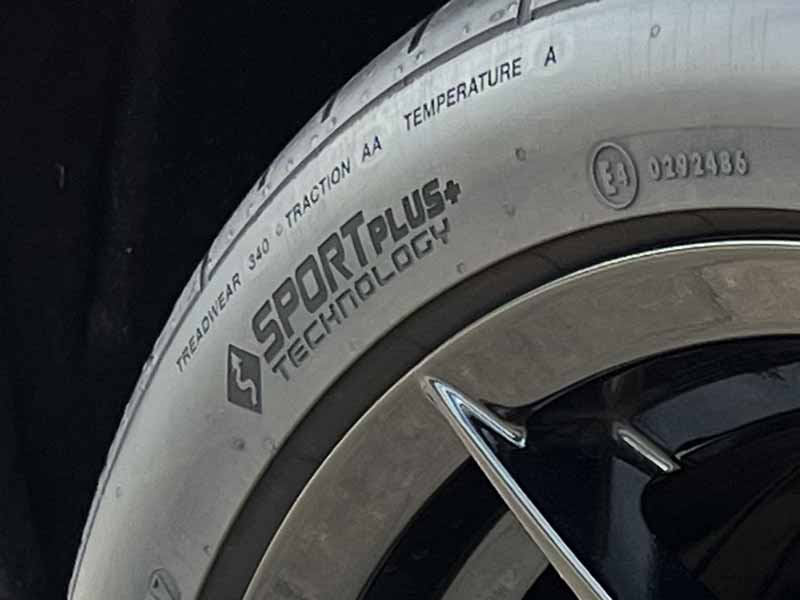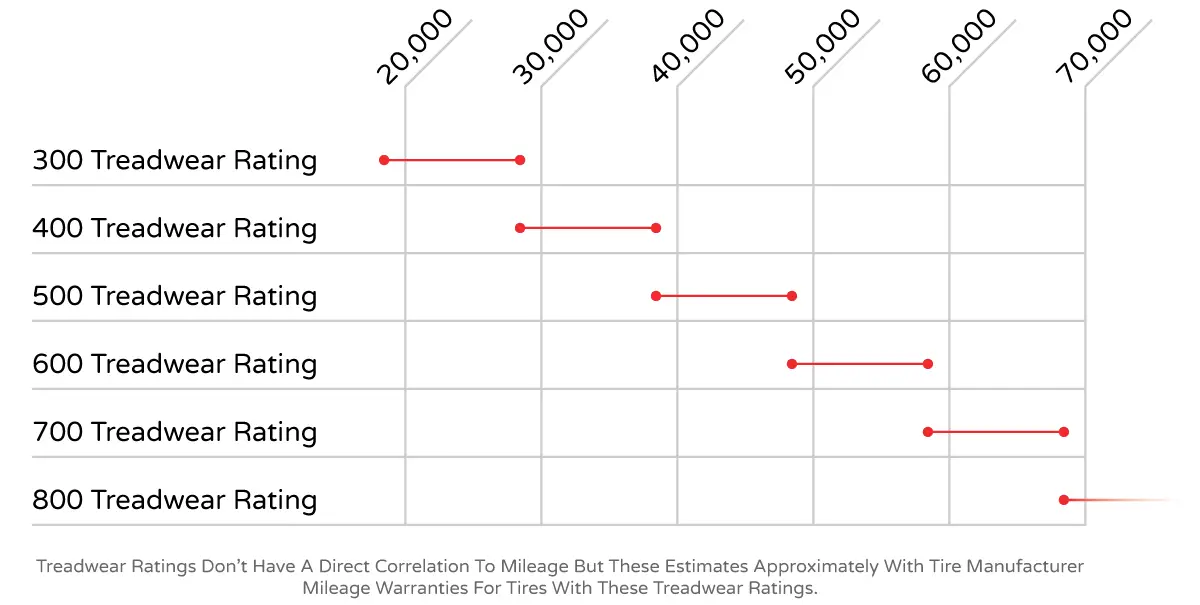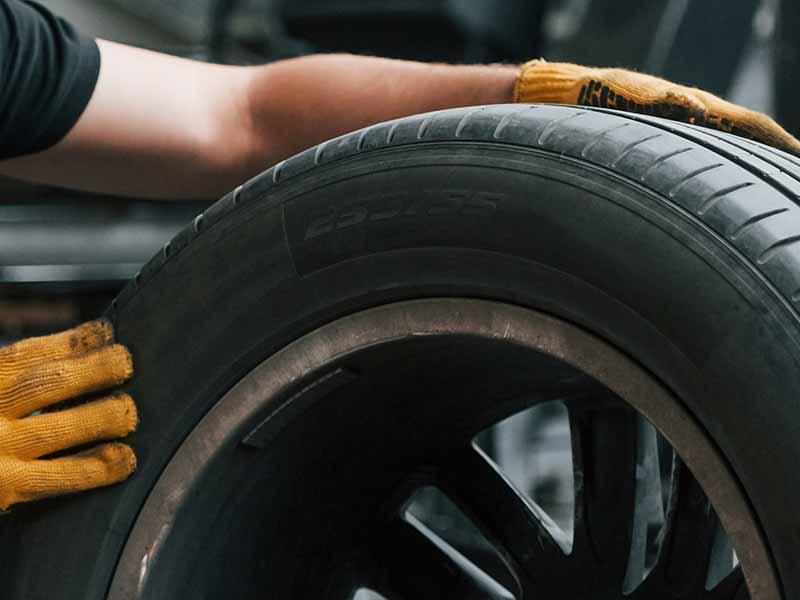Did you know that the average driver puts around 13,500 miles on their tires each year? With so many miles to cover, choosing the right tires is important for your safety and wallet. But how do you know which tires will last the longest and perform the best? That’s where UTQG treadwear ratings come in.
What Is A Good Treadwear Rating?
Generally speaking, anything equal to or greater than a UTQG 500 A B is a good rating. Ratings below this may be worthwhile in some circumstances, but for average passenger vehicles, this is a good minimum.
In this article, we’ll help you navigate the world of treadwear ratings, from understanding what they mean to exploring how they relate to mileage and warranties. You’ll also learn how to find the perfect balance between performance and longevity.
Let’s take a closer look.

Treadwear Rating Chart

What Does Treadwear Rating Mean?
The treadwear rating is a number assigned to a tire that indicates how long its tread is expected to last compared to other tires. The higher the rating, the better the tread life. But there’s more to it than just that!
Treadwear ratings are determined through a series of controlled tests. These tests are carried out on a specific type of track under certain conditions, like temperature and road surface. The tires are tested against a reference tire (a standard tire with a rating of 100) to see how they hold up. Once the test is complete, the tires are assigned a treadwear rating that’s a multiple of the reference tire’s rating. So, for example, if a tire has a treadwear rating of 200, it means its tread is expected to last twice as long as the reference tire.
Now, it’s important to understand that treadwear ratings are not an exact science. They’re more like a general guideline to help you compare different tires. Factors like your driving style, the types of roads you drive on, and how well you maintain your tires can all affect the actual life of your tire’s tread. So, while a higher treadwear rating might suggest a longer-lasting tire, it’s not a guarantee.
Treadwear rating is not only about how long your tires will last, but it’s also related to safety. As a tire’s tread wears down, it loses its ability to grip the road, especially in wet or slippery conditions. This can lead to a higher risk of accidents. So, by choosing a tire with a higher treadwear rating, you’re not only potentially getting a tire with a longer life, but you’re also investing in a safer driving experience.
Treadwear Rating Vs Mileage
You might think that a higher treadwear rating means you’ll automatically get more miles out of your tires, and while that’s somewhat true, it’s not the whole story. Let’s explore this relationship a bit more.
The treadwear rating is a helpful indicator of how long a tire’s tread might last compared to others, but it doesn’t directly translate into exact mileage. That’s because there are several factors that can influence the actual number of miles you get out of a tire, regardless of its treadwear rating.
First up, we’ve got driving habits. How you drive has a significant impact on your tire’s life. If you’re an aggressive driver who frequently accelerates quickly, brakes hard, or takes tight turns, your tires will wear down faster than someone who drives more gently. So, even if you have a tire with a high treadwear rating, your driving style might still cause it to wear out sooner than expected.
Next, let’s talk about road conditions. The surfaces you drive on can affect your tires’ lifespan too. If you frequently travel on rough, uneven, or debris-filled roads, your tires will wear down more quickly than if you stick to well-maintained highways. So, again, a high treadwear rating might not guarantee long-lasting tires if the roads you drive on are tough on them.
Lastly, proper tire maintenance plays a key role in getting the most miles out of your tires. Keeping your tires inflated to the correct pressure, regularly rotating them, and ensuring your vehicle’s alignment is correct are all important steps to extend the life of your tires, regardless of their treadwear rating.
So, while treadwear rating can give you a rough idea of how long a tire’s tread might last compared to others, it doesn’t tell you exactly how many miles you’ll get out of it. Your driving habits, the conditions of the roads you travel on, and how well you maintain your tires all play key roles in determining the actual mileage you’ll get from your tires.
Tire Mileage Warranty Calculator
Mileage Warranty Vs Treadwear Ratings
We’ve covered treadwear ratings and how they relate to mileage, but there’s another important aspect to consider when it comes to tire life: the mileage warranty. Let’s compare these two concepts and see how they work together to give you a more complete picture of a tire’s potential lifespan.
A mileage warranty is a promise made by the tire manufacturer that a tire will last for a specific number of miles before the tread wears down to a certain level. If the tire doesn’t meet this mileage threshold and the tread wear is within the warranty’s guidelines, the manufacturer may offer a prorated replacement or credit towards a new tire.
While both treadwear ratings and mileage warranties provide information about a tire’s expected life, they serve different purposes. Treadwear ratings are part of the UTQG system and give you a relative idea of how long a tire’s tread will last compared to other tires. On the other hand, mileage warranties are manufacturer-specific and offer a more concrete number of miles you can expect from a tire under specific conditions.
It’s important to remember that, just like treadwear ratings, mileage warranties are not foolproof. They often come with a set of conditions, like requiring regular tire maintenance and keeping records of services. Additionally, mileage warranties may be voided if the tire is damaged by road hazards, such as punctures, cuts, or impacts. Moreover, your driving habits and road conditions can still affect the actual mileage you get out of your tires, regardless of the warranty.
So, how do treadwear ratings and mileage warranties work together? When choosing a tire, consider both factors to get a more complete picture of the tire’s potential lifespan. The treadwear rating will help you compare different tires on a relative scale, while the mileage warranty will give you a specific mileage expectation from the manufacturer. However, always remember that real-world factors like your driving habits, road conditions, and maintenance practices will ultimately impact your tire’s actual performance and life.
How Does Treadwear Rating Work?
Now that we’ve explored treadwear ratings, mileage, and warranties, let’s dive into the nitty-gritty of how treadwear ratings actually work. We’ll look at the process used to determine these ratings and how the results are used to assign a treadwear rating to a tire.
To determine a tire’s treadwear rating, a standardized test is conducted by the tire manufacturer under controlled conditions. This test involves putting a set of tires through a specific driving course that simulates real-world conditions, such as different road surfaces and temperatures. The test vehicles follow a predetermined route, maintaining a consistent speed and covering a set distance to ensure that the test is fair and consistent.
During the test, the tires are periodically inspected and measured to track the rate of tread wear. These measurements are then compared to those of a reference tire, which has a known treadwear rating of 100. By comparing the wear on the test tire to the reference tire, a ratio is established, which serves as the basis for the treadwear rating.
For example, if the test tire’s tread wears down at half the rate of the reference tire, the test tire would be assigned a treadwear rating of 200. This means that its tread is expected to last twice as long as the reference tire’s tread under similar conditions.
However, it’s important to remember that the treadwear rating is a relative measure and not an exact prediction of a tire’s lifespan. Factors such as driving habits, road conditions, and tire maintenance can significantly affect the actual tread life. Additionally, the testing process may not perfectly replicate every possible driving scenario, so the treadwear rating should be considered a helpful guide rather than a guarantee.
Resources
Below are some links you may find helpful when learning about tires
- Guide to tire treadwear ratings – Tire Agent
- What tire treadwear grades mean for your customer – Tire Review
Final Thoughts
Understanding treadwear ratings is important when choosing the perfect set of tires for your vehicle. It helps you compare different tires based on their potential tread life and longevity.
Remember that treadwear ratings aren’t the whole story. Driving habits, road conditions, and proper tire maintenance all play a significant role in determining your tire’s actual lifespan.
Good luck and happy motoring.




